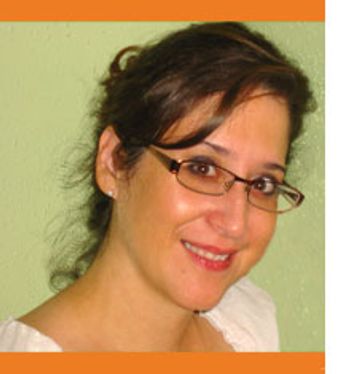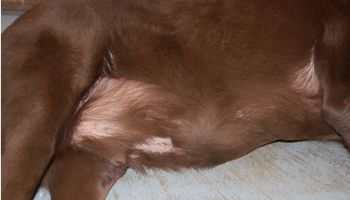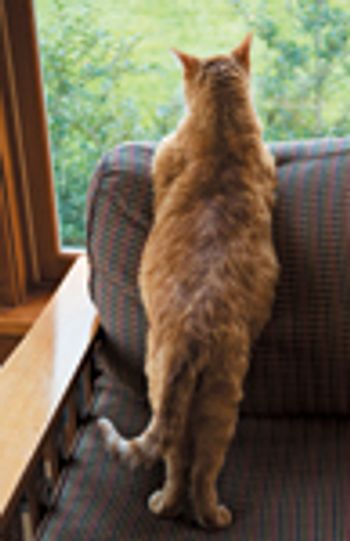
Gracie, a 10-year-old spayed cocker spaniel, was presented because she failed to regrow hair five months after surgery to remove a benign skin mass from the left lateral thorax.

Gracie, a 10-year-old spayed cocker spaniel, was presented because she failed to regrow hair five months after surgery to remove a benign skin mass from the left lateral thorax.

In this interactive case, see if you can help Roscoe, a hunting dog experiencing intermittent vomiting.

Surgeon Dr. Jenifer Newton explains why this is no longer her treatment of choice.

The relationship between PTH concentrations and hypercalcemia.

Recent studies have shown a link between hypertriglyceridemia and conditions such as pancreatitis and hepatobiliary disease similar to what is seen in people.

This senior dog now also struggles to get up on the couch. Take a look at Jack's photo, assess his initial laboratory findings, and decide what test to do next.

Learn the signs and common treatments for the chronic and acute complications that may develop so you can help catch them early in your feline patients.

When trying to identify mild degrees of adrenocortical insufficiency or critical illness-related corticosteroid insufficiency, low-dose ACTH stimulation testing is necessary to achieve an accurate diagnosis. But what dose is best in cats?

Insulin has become increasingly important in the treatment of dogs and cats with diabetes mellitus. Almost all dogs are classified with insulin-dependent or type 1 diabetes mellitus.

The pancreas has both endocrine and exocrine functions. The endocrine pancreas consists of the islets of Langerhans and is particularly important to carbohydrate metabolism.

Diabetes mellitus (DM) is one of the two most common endocrine disorders in cats. While we tend to think of diabetes as a disease entity, we should remember that it really is a heterogeneous group of disorders in which insulin production is reduced or in which tissue cells are resistant to the effects of insulin, resulting in impaired glucose homeostasis.

For years, feline pancreatitis has been assumed to be a similar disease to that in dogs. As with so many other disorders, this group of disorders is different in the cat.

Endocrine emergencies are clinical presentations in which immediate recognition and treatment of the endocrine disorder is required to decrease patient morbidity and prevent mortality. Endocrine disorders that require this immediate recognition and treatment are adrenal insufficiency, pheochromocytoma, diabetic ketoacidosis, hyperosmolar diabetes mellitus, insulinoma, hypoparathyroidism, and myxedema coma in severe hypothyroidism.

Hyperadrenocorticism remains one of the most common endocrine disorders diagnosed in the geriatric dog population. It is a disease that is seen in almost every veterinary practice. Unfortunately, the disease tends to be frustrating to deal with, a definitive diagnosis is at times elusive and therapy can have major adverse side effects.

The cause of IMHA has been discussed at length. Genetics are involved as there are breed predispositions such as the Cocker Spaniel. In addition gender may also play a role.

The endocrine pancreas is comprised of groups of cells (islets of Langerhans) scattered throughout the acinar parenchyma of the gland in a ratio of approximately 90% acinar cells (exocrine function) to 10% of islet cells (endocrine function). The pancreas is a boomerang-shaped organ comprised of two "wings" (duodenal and omental) in the cranial right quadrant of the abdomen.

In order for a hormone to be measured properly, with valid, repeatable results, the sample must be collected, stored and transported in a manner that is applicable for the hormone being tested. Obviously because various hormones have diverse chemical structures and physical properties, it is imperative that that the laboratory being utilized issue specific instructions and that these instructions be adhered to in order to achieve optimal results.

During the past 35 years there has been a dramatic emergence of both experimental and clinically applicable information in the subspecialty of endocrinology. With the development of such invaluable laboratory methodologies as radioimmunoassay (RIA), thinlayer chromatography (TLC), enzyme-linked immunosorbent assay (ELISA) and equilibrium dialysis (especially valuable in the measurement of free/unbound circulating hormones (ie., FT4).

Canine Hyperadrenocorticism (Canine Cushing's syndrome) is one of the more common endocrinopathies encountered in small animal practice; ranking behind only hypothyroidism and diabetes mellitus.

Hyperthyroidism is the most common endocrine disorder in the cat. Since being first recognized in 1977, the incidence has increased steadily. This is, no doubt partly due to greater awareness and early screening, but certainly also due to a real increase in occurrence of this disease.

The pituitary gland is a small structure that adheres to the base of the diencephalons; just caudal to the optic chiasm. It is comprised of an anterior portion-the adenohypophysis(which is made up of the pars distalis and the pars intermedia) and a posterior portion termed the neurohypophysis (pars nervosa).

Management of the uncomplicated feline diabetic can occasionally be controlled by oral hypoglycemic agents (approximately 25-35%). This is because approximately 90% of the feline diabetic patients are similar to human Type2 diabetes mellitus (non-insulin dependent diabetes mellitus-NIDDM). However, by the time the cat is diagnosed with diabetes mellitus, the blood glucose is severely elevated (often>450 mg/dl) and many cats are ketotic, thus insulin is usually required.

The thyroid gland is made up of paired lobes on the ventrolateral surface of the proximal trachea. Felines may have accessory thyroid tissue in the neck and thorax. The size of the thyroid gland varies with the size of the dog; with medium-sized dogs having lobes approximately 5 cm. in length, 1.5 cm. in width, and 0.5 cm in thickness. In the average (4.5 kg) cat each lobe is approximately 2 cm.

Dogs with gallbladder mucoceles should be tested for other common endocrine diseases.

A look at dermatologic disorders associated with endocrine disease.